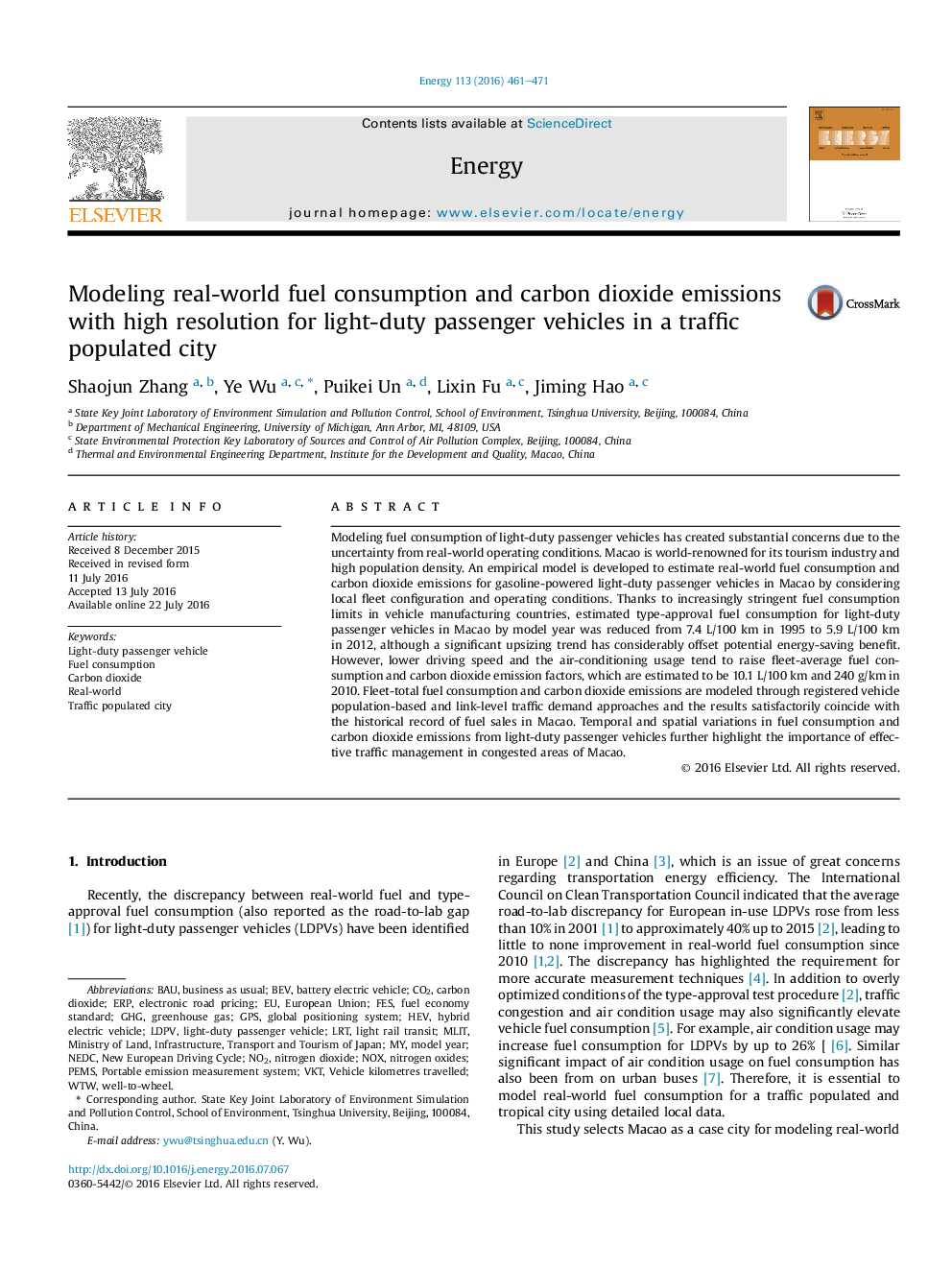| کد مقاله | کد نشریه | سال انتشار | مقاله انگلیسی | نسخه تمام متن |
|---|---|---|---|---|
| 1730754 | 1521435 | 2016 | 11 صفحه PDF | دانلود رایگان |
عنوان انگلیسی مقاله ISI
Modeling real-world fuel consumption and carbon dioxide emissions with high resolution for light-duty passenger vehicles in a traffic populated city
ترجمه فارسی عنوان
مدلسازی مصرف سوخت واقعی و انتشار دی اکسید کربن با وضوح بالا برای وسایل نقلیه سبک مسافرتی در یک شهر ترافیکی
دانلود مقاله + سفارش ترجمه
دانلود مقاله ISI انگلیسی
رایگان برای ایرانیان
کلمات کلیدی
FeSelectronic road pricingModel yearMLITWTWVKTBEVLRTPEMsHEVNEDCGHGBaU - BAUNOx - NOXEuropean Union - اتحادیه اروپاNitrogen oxides - اکسید نیتروژنERP - برنامه ریزی منابع سازمانLight rail transit - حمل و نقل ریل راه آهنWell-to-wheel - خوب به چرخHybrid electric vehicle - خودرو الکتریکی هیبریدیReal-world - دنیای واقعیCarbon dioxide - دیاکسید کربنGPS - سامانه موقعیتیاب جهانیPortable emission measurement system - سیستم اندازه گیری انتشار قابل حملGlobal Positioning System - سیستم موقعیت یاب جهانیFuel consumption - مصرف سوختNitrogen dioxide - نیتروژن دیاکسیدNO2 - نیتروژن دیاکسیدBattery electric vehicle - وسیله نقلیه الکتریکی باتریnew European driving cycle - چرخه ی جدید اروپاییBusiness as Usual - کار طبق معمولCO2 - کربن دیاکسیدGreenhouse gas - گاز گلخانه ای
موضوعات مرتبط
مهندسی و علوم پایه
مهندسی انرژی
انرژی (عمومی)
چکیده انگلیسی
Modeling fuel consumption of light-duty passenger vehicles has created substantial concerns due to the uncertainty from real-world operating conditions. Macao is world-renowned for its tourism industry and high population density. An empirical model is developed to estimate real-world fuel consumption and carbon dioxide emissions for gasoline-powered light-duty passenger vehicles in Macao by considering local fleet configuration and operating conditions. Thanks to increasingly stringent fuel consumption limits in vehicle manufacturing countries, estimated type-approval fuel consumption for light-duty passenger vehicles in Macao by model year was reduced from 7.4Â L/100Â km in 1995 to 5.9Â L/100Â km in 2012, although a significant upsizing trend has considerably offset potential energy-saving benefit. However, lower driving speed and the air-conditioning usage tend to raise fleet-average fuel consumption and carbon dioxide emission factors, which are estimated to be 10.1Â L/100Â km and 240Â g/km in 2010. Fleet-total fuel consumption and carbon dioxide emissions are modeled through registered vehicle population-based and link-level traffic demand approaches and the results satisfactorily coincide with the historical record of fuel sales in Macao. Temporal and spatial variations in fuel consumption and carbon dioxide emissions from light-duty passenger vehicles further highlight the importance of effective traffic management in congested areas of Macao.
ناشر
Database: Elsevier - ScienceDirect (ساینس دایرکت)
Journal: Energy - Volume 113, 15 October 2016, Pages 461-471
Journal: Energy - Volume 113, 15 October 2016, Pages 461-471
نویسندگان
Shaojun Zhang, Ye Wu, Puikei Un, Lixin Fu, Jiming Hao,
